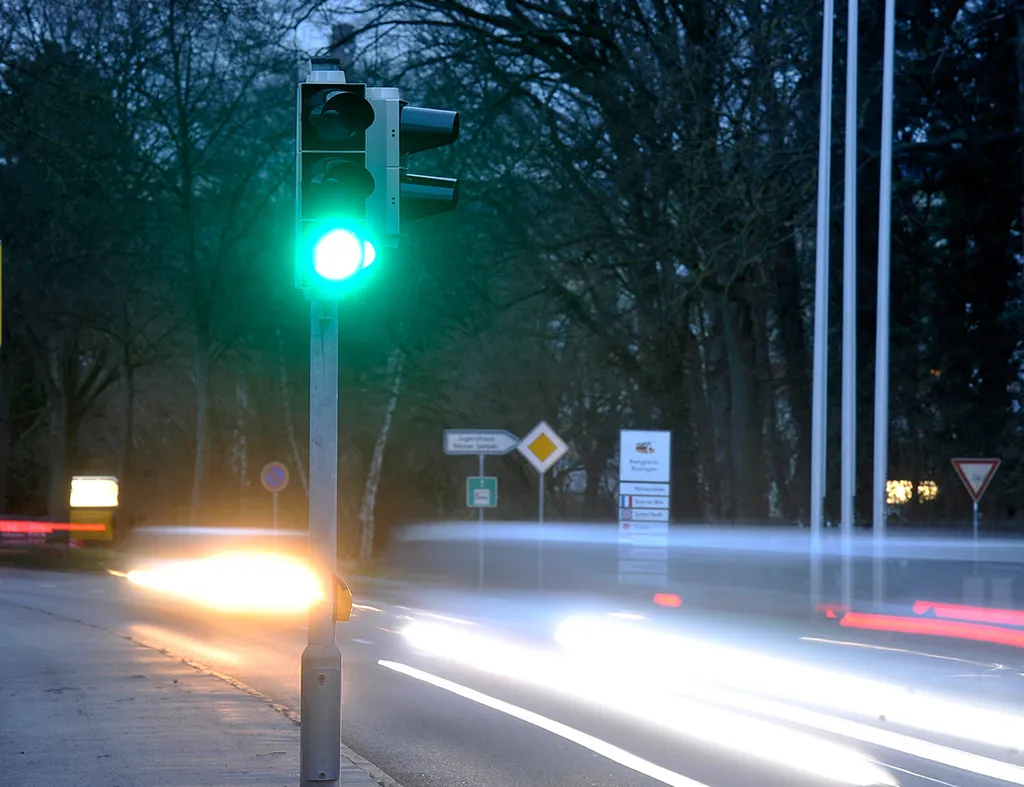Internet Explorer, Chrome Browser, Firefox Browser, Safari Browser
Press Release05 April 2016MobilityMunich
Siemens presents the world's thriftiest traffic light

Picture shows a traffic light working with 1-watt-technology
One-watt technology uses digital LED driver modules. This eliminates the need for load resistors and switching elements in the signal light units which until now have consumed most of the energy. Compared with the 60 watts sometimes consumed by incandescent bulbs, the electricity required by individual traffic light signals can be slashed to just one or two watts. State-of-the-art LEDs with extremely low power consumption still retain full light intensity. In addition to power costs, the 1-watt light units also reduce service costs. Optical monitors continuously check the state of the LEDs. It is conceivable that in the future it may be possible to predict when units will fail, thus enabling preventative maintenance of signal light units. Siemens is the first ever manufacturer worldwide to monitor not only voltage and current, but also the luminosity of the LED signal light units. With this multi-layered monitoring concept, the 1-watt traffic light achieves the highest level of safety in road traffic (SIL 3).
With 1-watt technology, a large city like Berlin can avoid some additional 2,000 tons of carbon emissions and save 500,000 euros in energy costs every year. If these efficient traffic lights are not used, a city like Berlin would have to plant around 2,000 deciduous trees every year to compensate for the otherwise resulting carbon emissions. Since the typical lifetime of a traffic light is more than ten years, a forest of 20,000 broadleaf trees would have to be planted to offset the harmful emissions of an intersection with conventional lights. In cities that still use large numbers of filament light bulbs instead of LEDs, the potential savings for energy costs and emissions are significantly higher, with newly-installed, 1-watt technology traffic signals at a typical intersection paying for themselves in less than five years.
Siemens AG (Berlin and Munich) is a global technology powerhouse that has stood for engineering excellence, innovation, quality, reliability and internationality for more than 165 years. The company is active in more than 200 countries, focusing on the areas of electrification, automation and digitalization. One of the world's largest producers of energy-efficient, resource-saving technologies, Siemens is No. 1 in offshore wind turbine construction, a leading supplier of gas and steam turbines for power generation, a major provider of power transmission solutions and a pioneer in infrastructure solutions as well as automation, drive and software solutions for industry. The company is also a leading provider of medical imaging equipment – such as computed tomography and magnetic resonance imaging systems – and a leader in laboratory diagnostics as well as clinical IT. In fiscal 2015, which ended on September 30, 2015, Siemens generated revenue of €75.6 billion and net income of €7.4 billion. At the end of September 2015, the company had around 348,000 employees worldwide. Further information is available on the Internet at www.siemens.com.
Reference Number: PR2016040225MOEN
Contact
Katharina Zoefeld
Siemens AG
Otto-Hahn-Ring 6
81739 Munich
Germany
81739 Munich
Germany
+49 (89) 636-636802